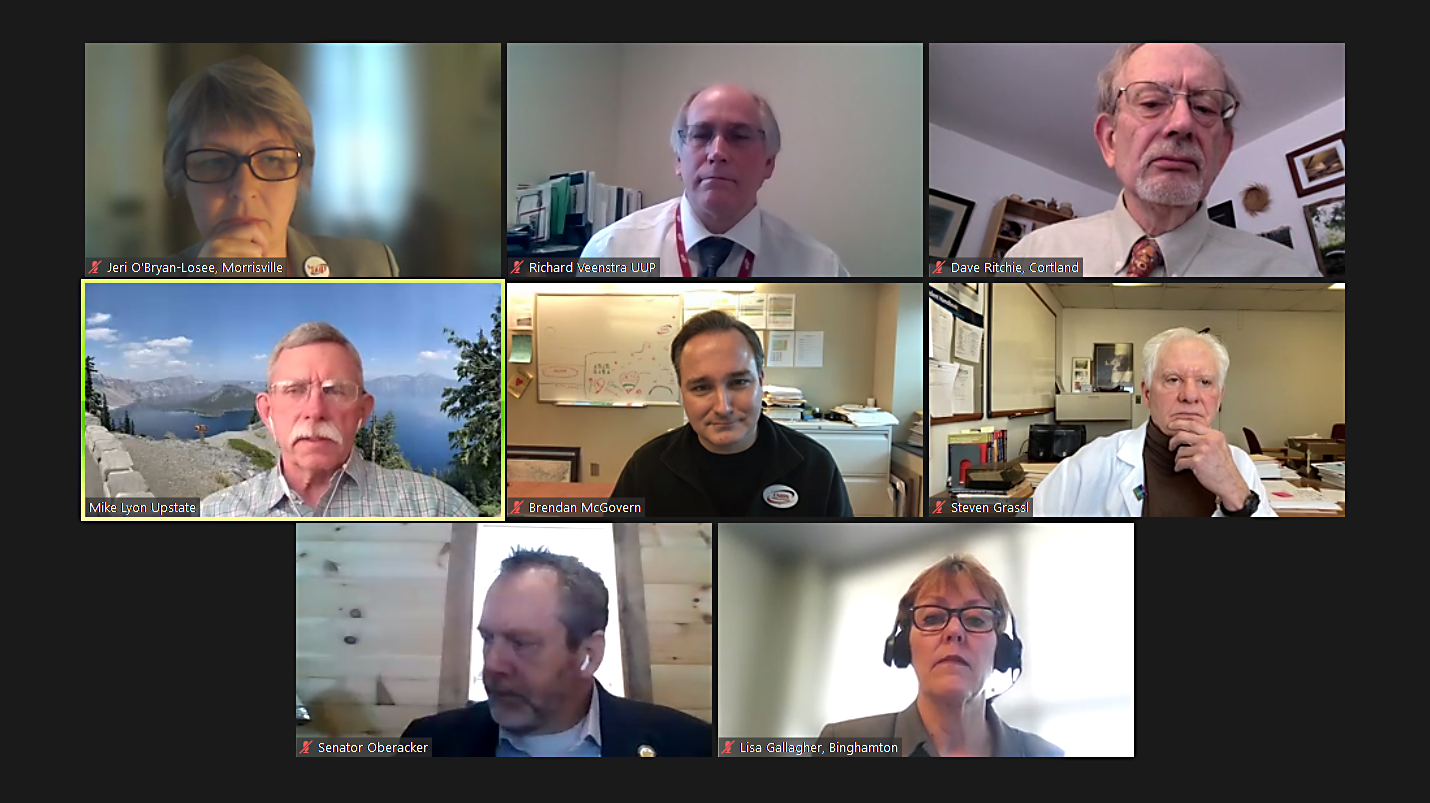Febrary 11, 2022

New York state just ended its fiscal year with $7.2 billion more in revenue than it expected.
Yet, for the fifth year in a row, SUNY’s public teaching hospitals got no direct state funding at all in the governor’s 2022-2023 Executive Budget. State-operated campuses fared better, but they will get nowhere near enough to counter 15 years of underfunding, unless lawmakers can intervene.
That’s the message dozens of UUP members delivered to legislators Feb. 11 for UUP’s annual Higher Education Advocacy Day: In a year when New York’s fiscal outlook has unexpectedly exceeded projections, “better than before” is a far cry from good enough for SUNY.
“Throughout this pandemic, the hospital has lost $150 million,” Rich Veenstra, president of the UUP chapter at Upstate Medical University told Sen. Peter Oberacker of the 51st District, which runs from an hour east of Albany and almost to Ithaca. “The hospital is in really dire straits.”
Funding not always what it seems
In a meeting with Assemblymember Al Stirpe, of the 127th District outside of Syracuse, members talked about how the proposals in the Executive Budget look very different once you read the fine print.
For example, the Executive Budget proposal provides $53 million for new full-time faculty for the SUNY system. But because that money will be shared with the community colleges, and it also must cover fringe benefits as well as the salary for new hires, it’s not as much as it seems on paper – especially when, as members told Stirpe, you consider that SUNY lost 1,200 full-time faculty lines through attrition or conversion to adjunct lines just between 2007 and 2010. That period marks the beginning of what would become a 15-year dry spell of inadequate funding for SUNY.
This chance many not come again
This is the year for the state to step up and invest in SUNY, UUP President Fred Kowal told members during a Feb. 10 session to prepare for their advocacy meetings.
“There is a lot of work to be done,” Kowal said. “Never before has the state of New York been in the position it’s in now. The revenue is there, and so is the wealth. Without the state Legislature and the governor stepping up and saying what we need, I’m afraid the opportunity will be gone, and it won’t come back again.”
The Executive Budget proposal includes $118.7 million for operating funds and program support to SUNY and it eliminates the TAP Gap. It also retains support for the SUNY opportunity programs, including the Educational Opportunity Program and the Educational Opportunity Centers, which work with low-income students from underrepresented communities.
For years, the Executive Budget proposal predictably cut funding for those programs, and the Legislature just as predictably restored the funding—a routine that required UUP to spend precious advocacy time and resources on making sure that two very popular and necessary services would be restored. Hochul has ended that kind of budgetary gamesmanship, allowing UUP to focus on budget issues for SUNY that are not likely to improve without dedicated advocacy and lawmakers willing to speak up , Kowal noted.
So in this rare moment of opportunity, UUP is pressing for a budget that will stand as a foundation for the coming years, and as a first step toward making up for 15 years of inadequate support.
“This is it,” Kowal told members. “This is our chance, and we cannot miss it. This is an opportunity we have to seize. For the first time in all the years I have been doing this—20 years—the money is there.”

